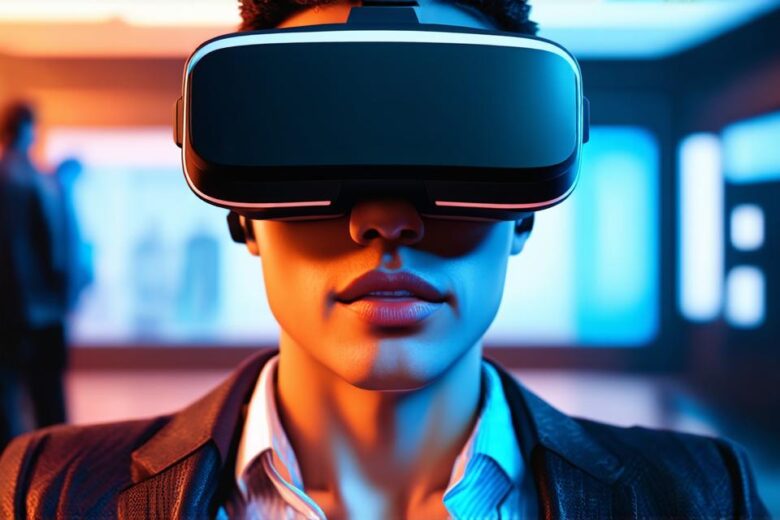Virtual reality (VR) and augmented reality (AR) are two rapidly developing technologies that allow users to experience digital content in new ways. While both technologies share some similarities, they also have their own unique features and applications.

What is Virtual Reality?
Virtual reality is a technology that immerses users in a computer-generated environment. It creates a sense of presence by surrounding users with three-dimensional visual and audio cues that simulate the real world. Virtual reality systems typically use headsets, gloves or hand controllers, and sensors to track the user’s movements and provide a realistic experience.
Virtual reality has been around for several decades, but it is only in the last few years that the technology has become more affordable and accessible. It has many potential applications in fields such as gaming, education, healthcare, and training. For example, virtual reality can be used to simulate dangerous scenarios, such as a firefight or a car accident, allowing users to practice their skills in a safe environment.
What is Augmented Reality?
Augmented reality is a technology that overlays digital content onto the real world. It enhances the user’s perception of the physical environment by adding digital elements such as text, images, or animations to the real-world view. Augmented reality can be experienced through smartphones, tablets, or specialized devices such as Google Glass.
Augmented reality has many practical applications in fields such as marketing, education, and entertainment. For example, augmented reality can be used to provide users with additional information about a product or location, such as a museum exhibit or a restaurant menu. It can also be used in the field of medicine to help doctors visualize patient anatomy or to teach surgical techniques.
Differences between Virtual Reality and Augmented Reality
While both virtual reality and augmented reality technologies allow users to experience digital content, they differ in several key ways. The main differences are:
- Immersion vs. Overlay: Virtual reality immerses users in a computer-generated environment, while augmented reality overlays digital content onto the real world.
- Interaction vs. Viewing: Virtual reality typically allows users to interact with the simulated environment, while augmented reality is more focused on providing additional information or enhancing the user’s perception of the physical environment.
- Cost vs. Accessibility: Virtual reality systems tend to be more expensive and require specialized equipment, while augmented reality can be experienced through common devices such as smartphones and tablets.
Conclusion
Virtual reality and augmented reality are two rapidly developing technologies that offer exciting possibilities for the future. While both technologies share some similarities, they also have their own unique features and applications. As virtual and augmented reality continue to evolve, we can expect to see even more innovative uses of these technologies in various fields.
